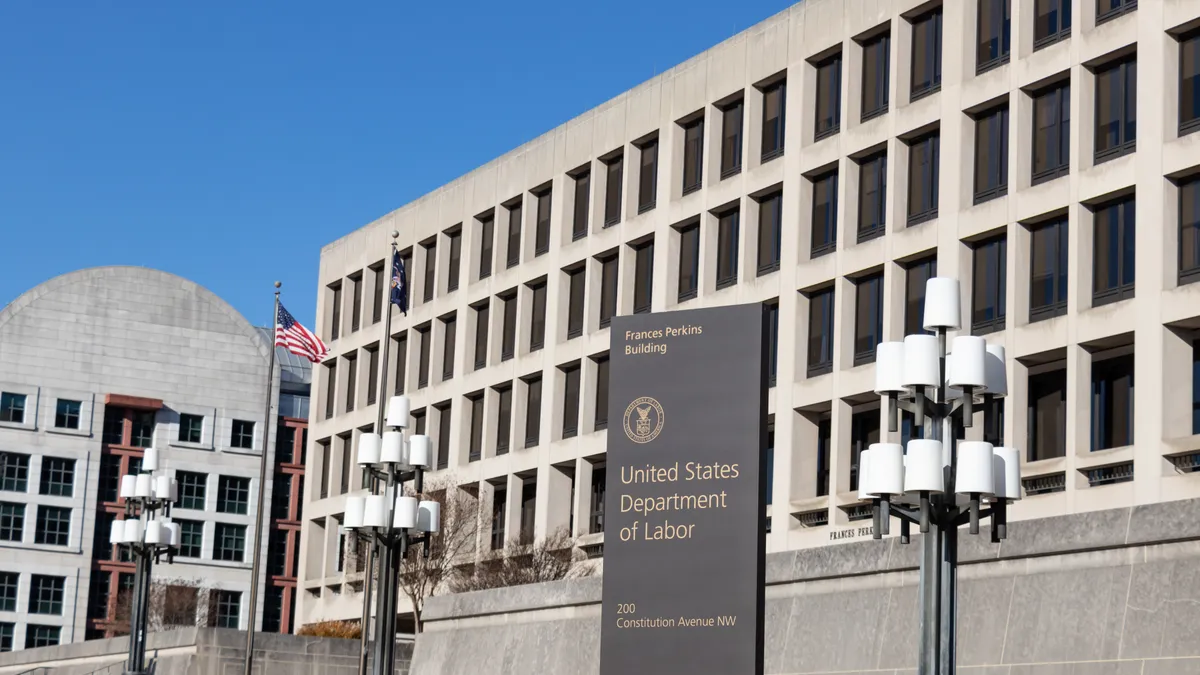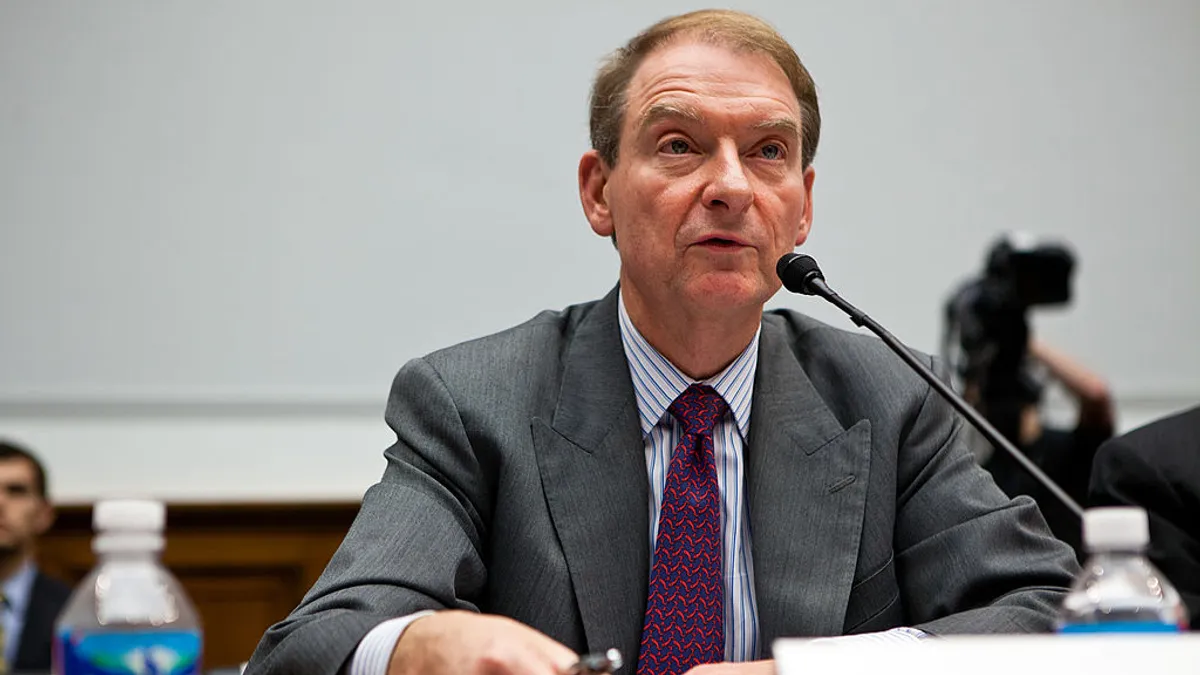With the introduction of the Department of Justice’s compensation pilot program, now’s a good time for general counsel to raise with leadership how proactive the company wants to be in changing its performance metrics and laying the contractual groundwork for clawbacks, Brandon Gantus of Freshfields Bruckhaus Deringer says.
DOJ earlier this month announced a three-year effort to encourage companies to change their performance metrics to give regulatory compliance — and not just business growth — a role in how much executives are paid and also put in place policies to claw back pay from employees that engage in misconduct.
“Our goal is to ensure that the company uses compliance-related criteria to reward ethical behavior and punish and deter misconduct … and to offer fine reductions for companies that seek to claw back compensation in appropriate cases,” DOJ Assistant Attorney General Kenneth Polite, pictured above with AG Merrick Garland and Deputy AG Lisa Monaco, said in early March.
Board matter
Whether or not companies make the changes could become a fiduciary issue if a company is subject to an enforcement action, said Gantus, a partner at Freshfields, because DOJ is promising a reduction in penalties to those that do.
That means companies that have the chance to change their policies, but don’t, face higher costs than they otherwise would if they’re caught in an enforcement action, an outcome at odds with leadership’s duty to do what’s best for the company.
“The new layer here is the fact that, if there was a situation and the company could save costs from a penalty, and their failure to act didn’t allow them to save costs, that puts more pressure on the decision to implement,” Gantus told Legal Dive.
Under the pilot, for companies that are subject to an enforcement action, DOJ will make recommendations for how they can tie compensation to compliance in exchange for a break on their penalties. And if the companies pursue clawbacks from employees who engaged in misconduct, they can get their penalty reduced by the amount that’s returned.
Even if they can’t get all or some of the money back, to the extent they make a good-faith effort to get it back, they can get a break on the penalty.
Laying the groundwork
At this stage, the main policy consideration for companies is whether or not they want to lay the groundwork for complying with the DOJ’s aims, Gantus said.
On clawbacks, that means putting in place the contractual changes that would be needed to enforce a clawback effort if and when that needs to be done in the future.
“Do we have built into our compensation system a way to go and claw back compensation legally if we wanted to enforce this?” Gantus said. “That way, if they are in a situation where there’s a DOJ investigation, the company could actually enforce a clawback from a contractual standpoint and being able to present that to the DOJ and say, ‘Okay, we will be able to do this because of the terms in our contract.’”
That’s different than the board actually getting into the weeds at this point and trying to set a clawback policy based on employee misconduct — a thorny issue on multiple levels.
First, few companies want to develop a reputation for going after their own employees’ pay for actions they took as part of their job given that most employee misconduct is not a black-and-white matter. “If word gets out that you’re the company that’s going to pursue clawbacks, for questionable misconduct determinations, you might have trouble on the recruiting front,” Gantus said.
And second, many boards are reluctant to wade into the murky waters of what is, and isn’t, misconduct.
“You see a lot of cases where misconduct’s pretty clear, but most of the time, it’s somewhere in the middle,” he said, “and then you’re having the board make a culpability assessment that some of them don’t really want to be involved in.”
The Securities and Exchange Commission already has rules requiring companies to claw back employee compensation, but it’s tied to companies that have to restate their financials, whether or not there’s misconduct, and the amount is clear, since it’s based on the amount of the restatement.
What DOJ wants in its pilot is less clear, and it can also ensnare lower-level managers.
For that reason, a company can go a long way in showing DOJ it’s serious about employee misconduct by making the contractual changes it needs to pursue clawbacks should it come to that rather than wading into the thornier issues of what is and isn’t misconduct, Gantus suggested.
Performance metrics
Similarly with DOJ’s effort to get companies to tie performance-based compensation to compliance.
Based on guidance the agency has released so far, it’s not entirely clear how DOJ envisions these compliance-based metrics, so it can make sense to create a broader framework that in essence can be filled in later should a company be subject to an enforcement action, Gantus suggested.
That means if a company ties, say, 70% of an executive’s compensation to a growth-related metric, like bookings or revenue, and 30% to something else, like an operational goal, the weightings can be changed to give space for compliance.
A company might create a policy that ties 40% to a growth-related metric, 40% to something operational and the rest to a discretionary category that can include a compliance piece.
“I can see companies introducing into that discretionary [category] operational goals that are compliance related,” he said.
These discretionary goals might include, for finance executives, something like minimizing significant discrepancies in audits, and for HR executives, reducing employee complaints. For sales executives, it might be reducing contracts with companies that are identified as bad actors.
What ties these goals together is they’re compliance-based but also align with growth goals, because meeting them can enhance the company’s performance.
The specific goals are less important at this stage than the framework for inserting the goals into the compensation program and then cross-referencing them so the framework applies even as new annual compensation programs are created.
“What companies should be doing now is not necessarily changing their metrics, because the DOJ might have something different in mind from a compliance-related standpoint,” Gantus said. “Rather, they should be thinking about, if you do have a situation, do you have built into your compensation system a way … to comply, following the DOJ’s steps?”



















